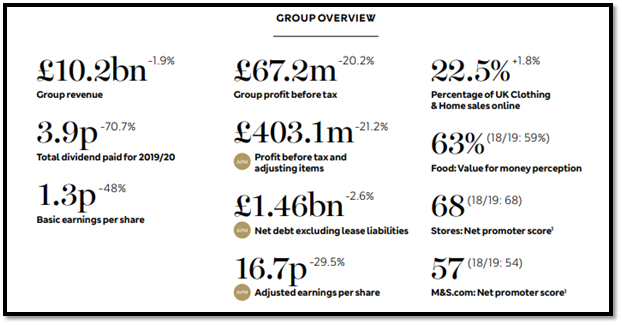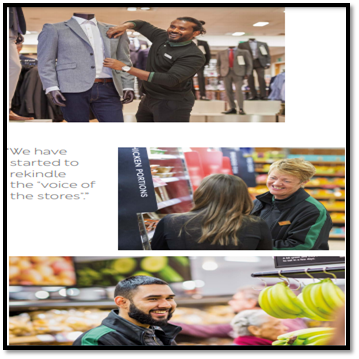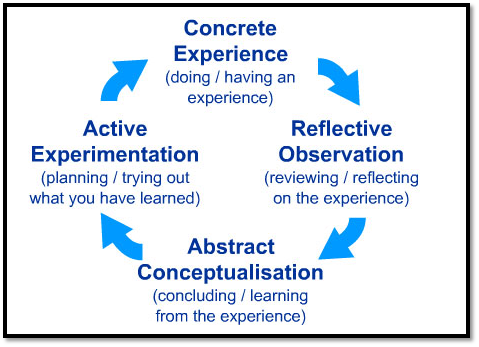Organizational Management Assignment: Case Analysis Of Marks & Spencer
Question
Task:
Write a detailed organizational management assignment critically discussing how M&S has to facilitate structural changes across its managerial, operational, and functional aspects to fight workplace challenges.
Answer
Executive Summary
The report on organizational management assignment deals with how M&S has to facilitate structural changes across its managerial, operational, and functional aspects to cope and mitigate the issues that have been concerning them for a long-time. Therefore, the company with the help of transformational leadership has tried to lead the organization and develop it in an all-encompassing manner. It also aimed that accentuating the capabilities of the employees to sharpen their efficacies and instigate them to foster the best serviceability to the customers that attribute higher customer’s satisfaction as well as employee engagement on the shop floor. Moreover, with the help of Kolb's reflective cycle, I have gained an understanding of my weakness in critical-thinking skills and communication skills. For this, I have developed a personal learning plan to enhance my skills effectively to increase my employability skills
1. Introduction
Effective leadership in an organization is hailed as one of the most integral and indispensable parts of the organization as leaders only lead the employees towards achieving the organizational goals but also focuses on acquiring market profits and a stable position. During challenging time of a business, leadership ought to act as an anchor to keep the business afloat in turbulent times or unprecedented crises (Western, 2019). In this context of discussions, the present report is placed wherein Marks & Spencer has been taken as a case study organization to explore and analyze how Marks & Spencer has incorporated the right leadership to mitigate and cope up with its organizational failures and workplace issues along with theoretical underpinnings. In addition to this, the report would also engage in personal reflection on the learning experiences gained and develop further a learning plan to enunciate a higher and deeper understanding of the business aspects.
2. Task 1: Exploring the workplace challenge of Marks & Spencer and critically analyzing it through a theoretical framework
2.1 Contextual background of the company
Marks &Spencer popularly known as M&S is one of the global leading retail primarily based in the UK that has been offering quality, great, and quality food at value, and home ware appliances and wearable and contemporary clothing to millions of customers globally. Operating as a family of accountable business, M&S also possess its own-brand model including M&S Bank that provides a range of financial services and M&S Energy that ensures renewable electricity at a great value. At present, the brand is operating in 57 countries that include 1400 stores and 50 international websites across the world and employs over 78, 000 people to serve over 32 million customers (marksandspencer, 2021, (a)).

Figure 1: Marks and Spencer
(Source: Ball, 2013)

Figure 2: Financial Statistics of 2020 of M&S
(Source: marksandspencer, 2020, (b))
2.2 Identification of the workplace challenge
The organization M&S has been facing challenges with its underperforming stores and degrading and lower sales after 94 years as global pandemic Covid-19 hit the trading endeavours of the company which is clothing and home sales slumped by 3.7% and 1.7% on a like-for-like basis (bbc, 2020). Furthermore, as per the reportage of Russell (2020), M&S needs to change at pace to mitigate its ongoing crises and challenges as well as to stabilize its revenue and requires greater efficiencies in addressing the flow of the product, stock visibility, and long-standing issue across its clothing supply chain. In addition to this, the analyst Russell also opined that M&S needs to restructure and renovate much of its existing functional and operational dynamics including the elimination of the outdated product lines, enhancing online presence and improving logistics.
In the documentation of the Annual Report of M&S, Chairman Archie Norman has acknowledged multiple loopholes in the management structure and causes of organization failures in M&S that have been strategically restricted the organization to bloom prosperously and attain the heights of success. Added to this, the soloed hierarchical, slow, and bureaucratic structure have gravitated to the systematic failures in the organization and made M&S resistant to contemporary changes of the markets and customers’ buying patterns and preferences. Even M&S, according to Norman, has been disorganized in the way the company operates, remained incompetent to incorporate the advanced technology, failed to refurbish the store portfolio (75% of the stores are over 24 years old) and innovate the product and service portfolio as well as demands for higher synchronization across the supply chains and restructuring of the pricing strategy (marksandspencer, 2020).
2.3 Identifying the leadership approach undertaken by the organization
M&S has to facilitate structural changes across its managerial and functional aspects to cope with and mitigate the issues that have been concerning them. The restructuring programme has been facilitated through Transformational Leadership as the organization has committed to regaining the lost glory of M&S by achieving the highest potentiality in every aspect as the brand could deliver long-term profitable and sustainable growth for the employees, colleagues, and investors. In the words of Abazeed (2018), transformational leadership is the type of leadership that is adhered to create positive value and changes in the organizational dynamics coupled with the dedicated contribution of the organizational members.
The tenets of transformational leadership encompass:
- Intellectual stimulation: Transformational leaders encourage the employees to exploit the highest talents of the employees and stimulate their creative imagination to explore new ways of knowing themselves, their capabilities and propel them ultimately to acquire new opportunities to grow and develop dependently.
- Idealized influence: A transformational leader acts as a role model for his employees through his ethical, amiable, endearing leadership that enables him to gain the trust and respect of his followers through influencing them ideally (Ghasabeh, Soosay, & Reaiche, 2015).
- Inspirational motivation: A transformational leader articulates a vision to share the same with his followers who in turn work with passion and dedicated motivation with a strong sense of purpose to achieve the organizational goals.
- Individualized consideration: Transformational leaders support the employees interpersonally to help them overcome their shortcomings through extensive communication and cater to their concerns and needs. The leaders also celebrate workplace contributions to the employees through recognition that drives intrinsic motivation in the employees (Chen et al., 2018).
The CEO, Steve Rowe, of M&S, envisaged transformational leadership as the potential and appropriate way to facilitate a long-term transformation of the business in every aspect that has been recognized as incompetent or unmatchable with the contemporary demands of the global industries and customers (marksandspencer, 2020). Moreover, Korejan & Shahbazi (2016), opines that transformational leaders possess the traits of agreeableness, openness to experience and extroversion. In this thread, the words of the CEO of M&S could be quoted who said that transforming the business in an all-encompassing manner is an “important step in becoming a leaner, faster business set up to serve changing customer needs” (bbc, 2020). Therefore, to renovate the business to achieve the global benchmarks and thereby increase the operational profits and market sales through heightened employee engagement, M&S thought of transformational leadership as the right one.
In addition to this, as documented by Sulieman Alqatawenh (2018), transformational leadership deem appropriate and contingent when the organisation undergoes some kind of turbulent or failing situations or remain incompetent before the competitive forces and the existing organisational structures and functionalities seem to be insufficient to govern the organisational activity. This very well justifies the incorporation of transformational leadership on the part of M&S to motivate, engage, inspire, and empower them to internationalise the organisational goals that would propel them to share the same organisational objectives and work cooperatively towards it with strong determination along with restructuring the every failing aspects of M&S through effective leadership. Even, driving online sales also formed a part of the restructuring programme to reach a wide spectrum of customer over the online medium (marksandspencer, 2020).
In the wake of the global pandemic of Covid-19, as reported by BBC(2020), transformational leadership has enabled M&S to emerge as a stronger, resilient, leaner, and endeavoured to achieve a more focused approach and market position to effectively navigate across the crises and challenges. In addition to this, it has been ascertained that the global pandemic has propelled the organization to accelerate its transformation programme through the initiation of the Never the Same Again programme and develop a more agile business at all fronts to suit the evolving customers’ demands and changing workforce needs (Davey, 2020).
Moreover, the transformational leadership enabled M&S to integrate the diverse strands of functional parameters and operational mechanisms along with eliminating intermediary complex management structures to induce flexibility and restructure the outdated management systems. Apart from this, the restructuring programme is ably assisted by an endeavour to fit the retail management with the foreseeable future and an attempt to establish clearer, stronger, and proficient leadership accountabilities along with customer-focused retailing (marksandspencer,2020, (a)).
2.3 The leadership interventions facilitated by the organization to remain motivated, engaged and committed to the organization.
As per the observations of Osborne (2018), M&S in its attempt to restructure the retail management, the company has facilitated waves of job redundancies of the existing employees with around 300 jobs to be cut on the shop floor that could impact the motivation level of the employees. This impact conditioned due to the closure of its 100 stores across the UK possesses the potential to lower down their morale and workplace loyalty, which is why the company implements diverse measures to ensure effective and proficient human resource management through transformational leadership. Moreover, this elimination of the job roles took a greater turn during the pandemic which risked the organization of employee dissent and grievances.
As per the documentation of Ramsey et al. (2017), transformational leaders perceives a profound meaning in the purpose and mission of the organization and propagates the same to the followers through idealized influence to energize and make them conscious of the desired organizational outcomes which aim at enhancing the motivation of the employees along with their morale and performances. By informing the cause of its anticipated measures of job-cutting (which would affect almost 950 jobs across the central support functions across the store management, property, central and field operations)by collectively consulting with the employee representative groups M&S tried to different mechanisms like voluntary redundancies, furloughing and so on to facilitated employee retention through retaining their loyalty in the organization and fostered an understandable workplace relationship which promised success to M&S even in the challenging time (Munbodh, 2020).
Furthermore, the Director of Retail, Operations, and Property at M&S, Sacha Berendji, claims to become leaner and flexible by empowering the teams across the stores and reinforce the working dynamics through consideration of the workplace needs, demands, and expectations amongst the employers and employees to offer utmost support in enunciating the highest proficiencies in the employees and help them to grow (marksandspencer, 2020 (c)).
Moreover, at the onset of the global pandemic of Covid-19, the transformational leadership has gained new significance for M&S and is reinforced with greater dynamicity, accountability and determination to get through the unprecedented crises induced by the pandemic. The employees of M&S are being encouraged with more flexibility to accentuate their productivity as well as offer them the scope of multitasking and meandering across the different departments of food, clothing and home. This has empowered the organization to attract higher employee commitments since they have been offered the autonomy to manage their stores and work as seemed appropriate to them (marksandspencer, 2020).
Therefore, the restructuring programmes at the store levels aimed that accentuating the capabilities of the employees so that they could be more focused on offering the best serviceability to the customers that would not only attribute higher customers satisfaction but also increases employee engagement on the shop floor (marksandspencer, 2021(b)). Furthermore, the store manager is supposed to have full accountability in facilitating the stand-out customer's services, lead high performing teams, ensuring the standards of the stores and possesses the ownership of P&L which made the employees put forth their own efforts and forge a connection with the workplace. This could be validated by stating that M&S has been trying to imbue intrinsic motivation to the employees through individual consideration and urging them to foster their creativity to make the store’s services contingent and reliable through intellectual stimulation, the two crucial tenets of transformational leadership (marksandspencer, 2020).
This ultimately enabled the employees in the M&S to deliver services with utmost proficiencies triggering in their job satisfaction and workplace engagement with positive energy to work coupled with enthusiasm. Taking reference from the words of Lai, Tang, Lu et al. (2020), the aforementioned statement could be evidenced by delineating the correlation between transformational leadership and workplace engagement. It has been ascertained that transformational leadership has the potentiality to accentuate and stimulate the workplace engagement of organizational members since they perceive a kind of belongingness and workplace recognition which acts as a crucial source of motivation. This is because transformational leaders motivate their followers to transcend their capabilities and interests to foster the best possible interests for the organisational they serve and self-manage their duties and responsibilities to bring out their highest efficacies and competencies (Mokhber bin Wan Ismail & Vakilbashi, 2015).
In addition to this, taking reference from the observation of Ghasabeh, Soosay,& Reaiche (2015), it could be stated that when the employees could perceive their contribution means a huge to the organisation and they can positively influence the outcomes of the organisation as well as are allowed to partake into the decision-making process of the company they inevitably engage and become a participant in an equitable relationship with the leader. This what underpinned the transformational programmes in relation to the employees of M&S who have been granted “the voice of the stores” to rekindle their workplace belongingness, attachment and offer heightened job satisfaction that not only ensured employee motivation but also empowered the organisation to drive success and productivity.

Figure 3: Rekindling the voice stores
(Source: marksandspencer, 2019)
3. Task 2: Personal reflection and learning plan
3.1 Reflecting on the personal learning experiences gained from the aforementioned task
While engaging in the exploration of the variegated characterizes of M&S and understanding the tenets of transformational leadership, I felt in retrospect that my theoretical and practical knowledge has been enriched significantly and offered an in-depth understanding of leadership and its significance for an organizational and its members. However, I thought to channelize my reflection through contextualizing Kolb’s experimental learning cycle. Kolb’s experimental learning cycle caters to the internal cognitive processes of a learner and enables the individual to transform personal experiences into knowledge which encompasses four stages namely the Concrete Experiences, Reflective Observation, Abstract Conceptualization, and Active Experimentation (Watson et al., 2019).

Figure 4: Kolb’s Reflective Cycle
(Source: Mcleod, 2017)
My concrete experiences were gained mainly through extensive exploration of the secondary databases like annual reports of the company, business articles, newspapers, and scholarly journals. My work that involved the identification of the pertinent facts and information from the databases, collating, and integrating them all to ensure a comprehensive view on the report premise enabled me to delve deeper into the nuanced aspects of transformational leadership, its quintessential significance in leading the organization both in time of success and failures, as well as understood how an organization incorporates the various measures and strategies through effective leadership to ensure continuous functioning of the business even in the trying times.
I reflected that for most of my thinking, I adhered to one kind of mental model to facilitate my ability to assemble the recurrent patterns of learning experiences that I was gaining as I continuously navigated across the different learning. I felt that my mental model which s consist of three very simple steps of observing and understanding the information, presenting the information and integrating it with the larger context of the report to induce coherency, also empowered me to tailor different strands of information as seemed relevant and contextual. However, while reading across the various facets of leadership I felt that if I ever become a manager of an organization in future, I might not able to foster my utmost proficiencies as I don’t possess all the relevant skills that a manager of a contemporary workplace should possess. I realized that I’m not fluent in communication skills mostly for a multicultural organization which might thwart my future desire of joining MNC future along with a lack of critical thinking skills which might hinder my effective problem-solving and decision-making skills mine of the organizational situation demands
In this way, I realized later that I was learning not only about the management theories related to my work but also learnt about my weakness in comparison to the contemporary expectations from an aspiring professional by making sense of my learning experiences deeply,
My abstract conceptualization of the mental model has been backed up with a theoretical understanding. I came across the fact that mental models could be different for different learners according to their cognitive disposition. Mental models refer to the individual's way of perceiving the various happenings and aspects of the world including understanding the different phenomenon, that also influences how one thinks, reasons, and facilitates decision-making (Gentner & Stevens, 2014). Furthermore, I understood the importance of communication skills for leaders or managers as it enables them to forge workplace relations along with the interpersonal relationship that only creates transparency, faith, cooperativeness, and understanding across all the operational levels but also reinforces the pace of the organizational productivity (Shokri et al., 2014). Moreover, critical thinking skills in a leader empowers him to facilitate effective and rationalized decisions based on logical thinking, arguments, eliminate inconsistencies, and choose the best solutions available (Bratton, 2020).
Therefore, my active experimentation would include formulating a personal learning plan with the help of the SMART objectives which I have discussed in details in the succeeding discussions.
3.2 Developing a personal learning plan through SMART objectives
|
Objective |
Specific |
Measurable |
Achievable |
Realistic |
Time-bound |
|
Developing communication skills |
Mastering communication skills both spoken and written along with developing language skills in one or more foreign language skills. |
I could measure my progress by analyzing my efficiencies to communicate fluently with a familiar and unfamiliar person and whether I could interact and comprehend foreign languages. |
I could achieve this by undertaking a professional course in communication and foreign language skills. Moreover, my personal efforts in trying to interact with people by coming out of my comfort zone could also help me in enhancing my communication skills. |
Fostering efficient communication skills would accentuate my managerial skills and efforts. This is because communication skills in leaders or managers enable them to actively listen and interact with the organizational members as well propagates empathy, transparency, clarity, and building trust (Zulch, 2014). |
6 months |
|
Developing critical thinking skills |
Mastering the problem-solving and decision-making skills to enhance my reasoning ability and efficacies to evaluate the different possible alternative to choose the best one. |
I could measure my critical thinking skills by examining whether I could solve critical and complex workplace problems. |
I could achieve this skill by undertaking an online course on critical thinking skills under expert guidance. |
Mastering over the critical thinking skills would enhance the presence of mind in dealing with complex crises in the workplace or any other kind of organizational issues through effective problem-solving techniques by recognizing the problem evaluating the alternative and choosing the best one along with facilitating a rational decision-making process (Mumford et al.,2017). |
6 months |
Table 1: My SMART personal learning plan
(Source: Created by the learner)
4. Conclusion
Henceforth, from the aforementioned discussions, it could be stated that M&S has been striving to recount for its failures and systematic incompetency through the incorporation of the transformational leadership that aims to refurbish all the possible functional and operational aspects including managerial implication emphasized more on employee engagement. It is assumed that transformational leadership would empower M&S to regain profitability and stability in the business as well as a heightened workforce. Moreover, my personal endeavours to enhance my employability skills to ensure higher eligibility and competencies as an aspiring manager.
References
Abazeed, R. A. M. (2018). Impact of transformational leadership style on organizational learning in the Ministry of Communication and Information Technology in Jordan. International Journal of Business and Social Science, 9(1), 118-129.
Ball, J. (2013). Marks & Spencer under fire over online tax arrangements Retrieved 16 May 2021, from
bbc.com (2020). M&S suffers first loss in 94 years as clothing slumps [Online] Retrieved 16 May 2021, from
bbc.com (2020). M&S to cut 7,000 jobs over next three months [Online] Retrieved 16 May 2021, from
Bratton, J. (Ed.). (2020). Organizational leadership. Sage.
Chen, Y., Ning, R., Yang, T., Feng, S., & Yang, C. (2018). Is transformational leadership always good for employee task performance? Examining curvilinear and moderated relationships. Frontiers of Business Research in China, 12(1), 1-28.
Davey, J. (2020). M&S to speed up latest reinvention in 'never the same again' plan. [Online] Retrieved 17 May 2021, from
Gentner, D., & Stevens, A. L. (Eds.). (2014). Mental models. Psychology Press.
Ghasabeh, M. S., Soosay, C., & Reaiche, C. (2015). The emerging role of transformational leadership. The Journal of Developing Areas, 49(6), 459-467.
Korejan, M. M., & Shahbazi, H. (2016). An analysis of the transformational leadership theory. Journal of fundamental and applied sciences, 8(3), 452-461.
Lai, F. Y., Tang, H. C., Lu, S. C., Lee, Y. C., & Lin, C. C. (2020). Transformational leadership and job performance: the mediating role of work engagement. SAGE Open, 10(1), 2158244019899085.
marksandspencer.com (2019). [Online] Retrieved 17 May 2021, from
marksandspencer.com (2020), (a). M&S ANNOUNCES PROPOSALS TO ACCELERATE THE TRANSFORMATION OF ITS RETAIL MANAGEMENT STRUCTURE. [Online] Retrieved 16 May 2021, from
marksandspencer.com (2020), (b). Our Year in Review 2020. Retrieved 17 May 2021, from
marksandspencer.com (2020), (c). [Online] Retrieved 17 May 2021, from
marksandspencer.com (2021) (a). About Us. [Online] Retrieved 16 May 2021, from
marksandspencer.com (2021) (b). People. [Online] Retrieved 17 May 2021, from
Mcleod, S. (2017). [Online] Retrieved 17 May 2021, from
Mokhber, M., bin Wan Ismail, W. K., & Vakilbashi, A. (2015). Effect of transformational leadership and its components on organizational innovation. Iranian Journal of Management Studies, 8(2), 221-241.
Mumford, M. D., Todd, E. M., Higgs, C., & McIntosh, T. (2017). Cognitive skills and leadership performance: The nine critical skills. Organizational management assignment The Leadership Quarterly, 28(1), 24-39.
Munbodh, E. (2020). Marks & Spencer says 950 jobs are at risk as part of new 'management structure'. [Online] Retrieved 17 May 2021, from
Osborne, H. (2018). Marks & Spencer has plans for further 300 job cuts to reel in costs [Online] Retrieved 16 May 2021, from
Ramsey, J. R., Rutti, R. M., Lorenz, M. P., Barakat, L. L., & Sant’anna, A. S. (2017). Developing global transformational leaders. Journal of World Business, 52(4), 461-473.
Russell, M. (2020). M&S clothing needs "change at pace" say industry onlookers. [Online] Retrieved 17 May 2021, from
Shokri, N. M., Lin, E. Y. E., Radzi, H. M., Mokhtar, R., Ghazali, F., Muslimen, M. A., & Tarmizi, M. A. A. (2014). Communication skills: A-must-have skills for today’s leaders. In Proceedings of the 2nd Conference on Innovative Trends in Multidisciplinary Academic Research.
Sulieman Alqatawenh, A. (2018). Transformational Leadership Style and its relationship with change management. Vilnius Gediminas Technical University.
Watson, M. K., Pelkey, J., Noyes, C., & Rodgers, M. O. (2019). Using Kolb’s learning cycle to improve student sustainability knowledge. Sustainability, 11(17), 4602.
Western, S. (2019). Leadership: A critical text. Sage.
Zulch, B. (2014). Leadership communication in project management. Procedia-Social and Behavioral Sciences, 119, 172-181.












